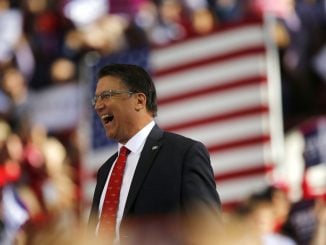
WASHINGTON, D.C. U.S. economic growth slowed less than previously reported in the fourth quarter as robust consumer spending provided a boost that was partially offset by the largest gain in imports in two years.Gross domestic product increased at a 2.1 percent annualized rate instead of the previously reported 1.9 percent pace, the Commerce Department said on Thursday in its third GDP estimate for the period.The economy grew at a 3.5 percent rate in the third quarter. Despite the upward revision to the fourth quarter, the economy grew only 1.6 percent for all of 2016, its worst performance since 2011, after expanding 2.6 percent in 2015.There are signs that economic activity slowed further in the first quarter, with the trade deficit widening in January and both consumer and construction spending weakening.With the labor market near full employment, the data likely understate the health of the economy – GDP also tends to be weaker in the first quarter because of calculation issues the government has acknowledged and is trying to resolve.”Some of this softness is due to seasonal adjustment issues that will reverse later in the year,” said Gus Faucher, deputy chief economist at PNC Financial in Pittsburgh. “Consumer spending will lead growth thanks to higher incomes from more jobs and rising wages.”The Atlanta Federal Reserve is forecasting GDP rising at a rate of 1.0 percent in the first quarter.Though the moderate growth pace has been sufficient to lower unemployment, it is a challenge to President Donald Trump’s goal of boosting annual growth to 4 percent by slashing taxes, increasing infrastructure spending and cutting regulations.The Trump administration has offered few details on its economic policies, but both business and consumer confidence have surged following the businessman-turned-politician’s electoral victory last November.After last week’s failed attempt by Republicans in the U.S. House of Representatives to repeal the Obama administration’s 2010 healthcare law, economists say Trump faces a tough road ahead implementing his pro-growth agenda.”The primary question is whether the next few years will resemble the last several years with growth of around 2 percent or whether better days lie ahead,” said Jim Baird, chief investment officer at Plante Moran Financial Advisors in Kalamazoo, Michigan.The dollar was slightly stronger against a basket of currencies, while prices for U.S. Treasuries fell. U.S. stocks were trading higher. Economists polled by Reuters had expected fourth-quarter GDP would be revised up to a 2.0 percent rate.Growth in consumer spending, which accounts for more than two-thirds of U.S. economic activity, was revised up to a 3.5 percent rate in the fourth quarter. It was previously reported to have risen at a 3.0 percent rate.Consumer spending is being supported by a tightening labor market. A separate report from the Labor Department on Thursday showed initial claims for state unemployment benefits fell 3,000 to a seasonally adjusted 258,000 for the week ended March 25.Claims have now been below 300,000, a threshold associated with a healthy labor market for 108 straight weeks. That is the longest stretch since 1970, when the labor market was smaller.



